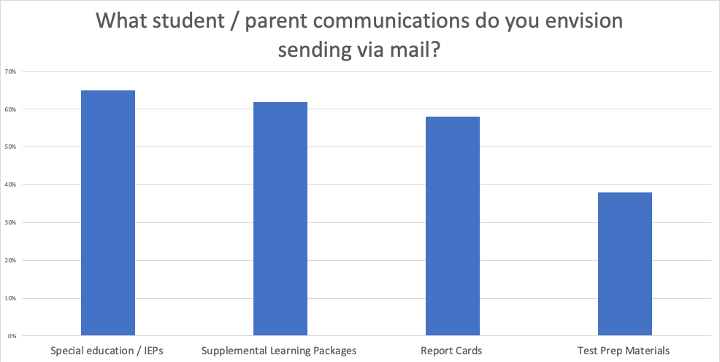Earlier this year, as unplanned emergency school closures took place, educators were faced with the inability to access their classrooms and tools they relied in to provide quality education for their students. School districts and educators quickly made the shift to remote, online education. This created many challenges for educators, including:
• How to transition to remote learning?
• How to overcome the digital divide?
• How to preserve the integrity of learning?
• How to continue tailoring instruction based on student needs?
• How to communicate and connect with parents and students?
While many school districts turned to technology programs, such as 1:1 chromebook programs to support synchronous and asynchronous learning, many of the most vulnerable, at risk students in public education were not able to make such a quick shift due to lack of internet connectivity at home. In fact, an estimated 9 million students lack internet access at home for online learning.
Schoolboards turned to innovative solutions, including sending out content on USB sticks, and adding wi-fi hotspots to public housing facilities, but these solutions were not guaranteed to reach all at risk students.
To overcome this challenge, many educators added mail as a distribution medium for education resources. This way they were ensured that the students with lack of internet connectivity were able to continue with their education.
Another issue was aiding various students with Individual Education Plans (IEPs), who may struggle to learn in an online only environment. These students may require access to physical materials to help enable their learning, in addition to the online content made available to them. While adding the physical materials enabled their learning, an additional positive outcome was feedback that the learning was actually enhanced and enriched by adding multiple communication types.
This was the exact challenge that the Frederick County Public Schools in Winchester, Virginia faced in April 2020. With 23 schools closed and over 13,000 students to support, the district found a solution for delivering remote learning materials to students who did not have access to the internet.
They chose to implement Neotouch from Quadient. The school district was able to upload a list of students who need access to physical materials. Teachers and administrators could access the system and upload learning packages as they are developed. Students are able to login and learn through online programs. The communications are delivered digitally, and students who require physical copies receive them via the mail. The teachers enjoy the nature of the Quadient solutions because they can access the portal remotely, while working from anywhere. The power to send information to student or teachers, sometimes as simple as a text from anywhere can make a major impact on student learning.
In order to make mail processing easy, the educational packages are sent to an outsourcing provider. All requests are put into a batch and are processed the next day - printed and mailed on behalf of the school district - reducing the time required to send out communications to students.
Frederick County was able to get the entire system up and running in only three days, and over the next three weeks processed over 200,000 communications to keep their students learning. Feedback from educators, students and parents has been overwhelmingly positive.
In a recent survey, Quadient found that 65% of educators where looking for a way to deliver on special education and IEP-oriented communications, and 62% of educators are looking for a way to deliver supplemental learning packages. In addition, 58% of school boards need a solution for delivery report cards via mail:

With a secure digital platform like Impress Distribute, it is possible for school districts to comply with regulations by ensuring IEP-oriented communications are sent out on-time, but are also secured using DocuSign (for online communications) or via Registered Mail® (for physical communications).
The challenge for many school districts is that they are not aware of the solutions that are available to help them reach at risk students more effectively. If you are an educator looking to have a voice in a purchasing decision, please share this article and a link to our recent webinar reviewing this topic with your administration.
If you are in charge of purchasing for your school board or district and are looking for a demonstration of the Quadient solution, reach out to us to book a one on one consultation today.
